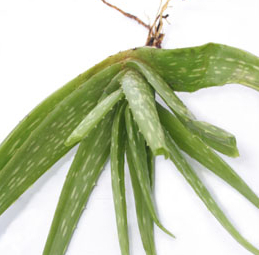If you are looking to grow herbs in your garden, you have to decide between growing perennial and annual varieties. It is a good idea to plant the perennial ones since you need to plant them only once, and enjoy them each season.

Herbs that need to be planted only once, for them to grow season after season for a few years, can be defined as perennial herbs. These are generally hardy, and do not require too much effort to grow. Having a herb garden is a wonderful addition, since you can use these plants to flavor your food. If you are desirous of having such a garden at your home, you have to choose herbs to plant, considering how much sunlight they are going to get. Some perennials require moderate amounts of sunlight to thrive while others require a temperate climate. Another important thing to consider is the composition of the soil.
List
Before we discuss different varieties of these plants that you can grow in a herb garden, let us know about some of them. These include:
- Aloe
- Angelica
- Bay Leaf (leaves of the Bay Laurel plant)
- Basil
- Chives
- Dill
- Fennel
- Ginko
- Ginger
- Ginseng
- Hyssop
- Horehound
- Lavender
- Lemon Balm
- Lemongrass
- Marjoram
- Mint
- Oregano
- Rosemary
- Sage
- Savory
- St. John Wort
- Tansy
- Thyme
- Tarragon
- Urva Ursi
- Valerian
- Yarrow
Plants to Grow
If you are planning to have a herb garden, planting a selection of perennial ones can enhance it. Not all of them do well in all kinds of climate and soil composition. So, you have to make sure that the ones you plant in your garden are suitable for your climate.
Chives: These herbs are members of the onion and garlic plant, and they grow about a foot tall. They are dark green in color, and have hollow stems that are cylindrical in shape. They have to be planted in clusters of four to six seedlings that are 8 to 12 inches apart. They can be harvested, once they reach a height of at least 6 inches. Chives have various culinary uses and can be used to flavor soups and stews. They have a mild onion flavor that works well with meat and poultry dishes.
Marjoram: It grows to a height of about a foot, and its leaves are small oval-shaped, which are about an inch in size. These leaves are used in flavoring soups, sauces, and stews. They have a pungent yet sweet taste and are widely used in Mediterranean cooking. The herb requires full sunshine to grow and cannot tolerate cold and frost.
Thyme: It grows to a height of 7 to 15 inches, and its leaves are used in cooking. These leaves are ½ inch in length and are small and narrow. They come in many varieties such as English thyme, orange thyme, and lemon thyme. All of these are used for culinary purposes. They grow well in a temperate climate, and they are also used for making thyme oil and other medicinal products.
Sage: It is a perennial herb that grows to a height of about 2 feet. Its leaves are small and narrow and are grayish green in color. The stems are hard and woody and are not used for cooking. Its leaves have a warm, peppery taste, and aroma, making them ideal for flavoring meat and poultry dishes. There are various uses of these plants, and one of them is for making sage flavored oil.
These plants can add grace and elegance to your herb garden, and you can use them for cooking, as well. Hardy perennial varieties do not require too much effort to grow, once planted.






 Herbs that need to be planted only once, for them to grow season after season for a few years, can be defined as perennial herbs. These are generally hardy, and do not require too much effort to grow. Having a herb garden is a wonderful addition, since you can use these plants to flavor your food. If you are desirous of having such a garden at your home, you have to choose herbs to plant, considering how much sunlight they are going to get. Some perennials require moderate amounts of sunlight to thrive while others require a temperate climate. Another important thing to consider is the composition of the soil.
Herbs that need to be planted only once, for them to grow season after season for a few years, can be defined as perennial herbs. These are generally hardy, and do not require too much effort to grow. Having a herb garden is a wonderful addition, since you can use these plants to flavor your food. If you are desirous of having such a garden at your home, you have to choose herbs to plant, considering how much sunlight they are going to get. Some perennials require moderate amounts of sunlight to thrive while others require a temperate climate. Another important thing to consider is the composition of the soil.